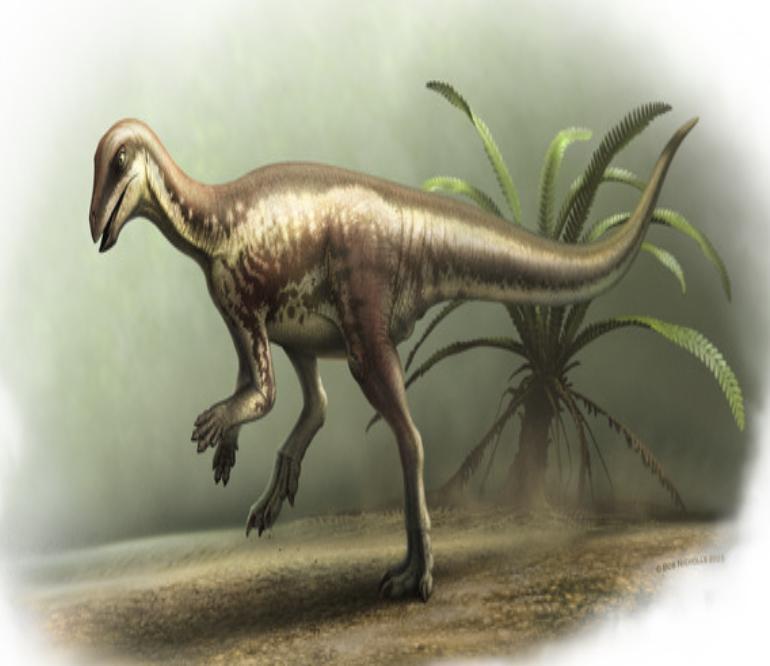
Scientists Discover 150 Million Years Old Dog-Sized Dinosaur Species
In a groundbreaking discovery, scientists have unearthed a new species of dinosaur that roamed the United States around 150 million years ago. The species, named Enigmacursor mollyborthwickae, is a fascinating find, as it was dog-sized, with its tail being nearly half of its total body length. This remarkable discovery has sent shockwaves through the scientific community, offering a glimpse into the lives of these prehistoric creatures.
The study, published in the journal Royal Society Open Science, highlights the incredible details of this ancient species. According to the research, Enigmacursor mollyborthwickae was approximately the same size as a Labrador retriever, measuring around 3-4 feet (90-120 cm) in length, with its tail making up around 45% of its total body length. This unique characteristic sets it apart from other known dinosaurs.
The study’s co-researcher, Dr. Hans Larsson, a paleontologist at McGill University, described the dinosaur as “quite a speedy runner.” This remarkable characteristic suggests that Enigmacursor mollyborthwickae was well-adapted to its environment, with its speed allowing it to efficiently hunt and evade predators.
So, where exactly did this dog-sized dinosaur roam? The fossil remains of Enigmacursor mollyborthwickae were found in the United States, specifically in the Morrison Formation in Colorado. This region was once part of a vast, arid desert during the Late Jurassic period, around 150 million years ago.
The discovery of Enigmacursor mollyborthwickae provides valuable insights into the lives of dinosaurs during this period. The Morrison Formation was a hot and dry region, with limited vegetation, which made it challenging for dinosaurs to survive. The fact that Enigmacursor mollyborthwickae was able to thrive in this environment suggests that it was well-adapted to its surroundings.
The study’s findings also offer a glimpse into the evolution of dinosaurs. Enigmacursor mollyborthwickae is a member of the Ornithopoda clade, which includes many well-known dinosaurs, such as Iguanodon and Hadrosaurs. The discovery of this new species provides valuable information about the evolution of this clade, and sheds light on the diversity of dinosaurs during the Late Jurassic period.
The research team used a combination of techniques to analyze the fossil remains of Enigmacursor mollyborthwickae. They employed computerized tomography (CT) scans to reconstruct the dinosaur’s skeleton, and analyzed the fossilized remains to determine its size, shape, and other characteristics.
The discovery of Enigmacursor mollyborthwickae is a testament to the ongoing efforts of paleontologists to uncover the secrets of the ancient world. As scientists continue to study the fossil record, they are constantly reminded of the incredible diversity of life on Earth, and the importance of preserving our natural history for future generations.
Source:
https://royalsocietypublishing.org/doi/10.1098/rsos.242195
Note: The article is based on the study published in Royal Society Open Science. The research was conducted by a team of scientists led by Dr. Hans Larsson, and the findings are a result of their rigorous analysis of fossil remains and computerized tomography (CT) scans.






